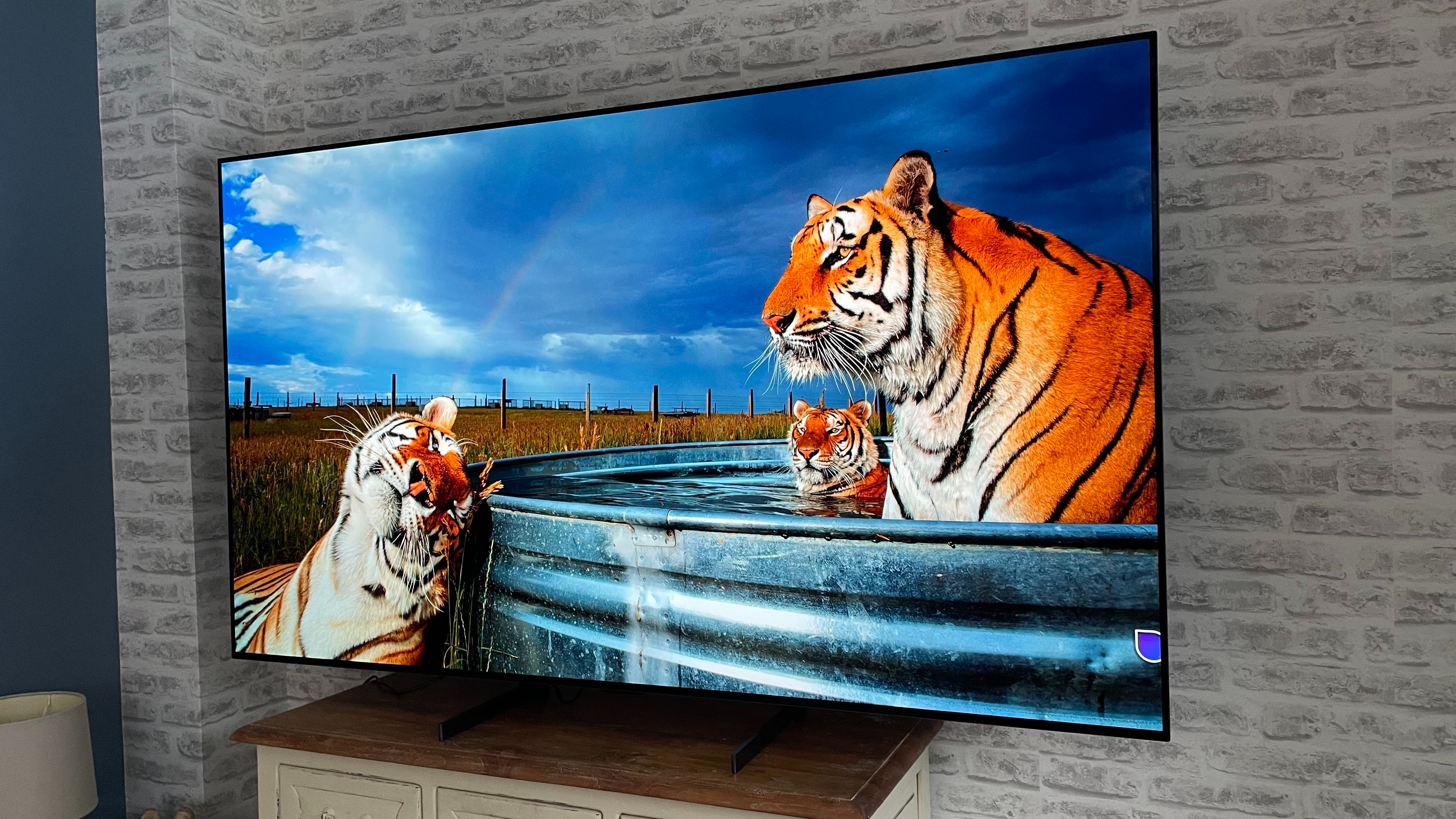The key to next-gen brighter OLED TV tech just got delayed – but not by much, thankfully
Yo, listen up, here's a story about an OLED that lives in a blue world

As we've previously reported, one of the most promising bits of TV technology is blue phosphor OLED tech. Phosphor OLED material is more efficient, providing more brightness without needing as much power, therefore running cooler. This tech is already used in read and green OLED pixels, but blue pixels have proven to be the most challenging ones to manufacture.
Blue phospor OLED has been the next big thing in TV tech for some time, with firms such as LG and Samsung considering their use as they get closer to reality – that's especially no surprise in Samsung's case, because even though all the best OLED TVs will benefit from better blue pixels, Samsung's QD-OLED screens will especially benefit because they're made up mostly of blue pixels (with a quantum dot layer over them to change the colors).
But it looks like there's been a little bump on the road to our brighter OLED future. According to the latest financial results by Universal Display Corporation, the firm that's driving blue phosphor OLED technology, it's going to take a little more time than anticipated to commercialize the tech. That's the bad news. The good news? The extra time is "measured in months and not years", and the firm expects to have a commercial blue phOLED material ready in 2025.
Why PHOLED is phantastic
We should always take manufacturers' figures with a hefty dose of salt, but in theory phOLED displays are capable of up to 100% internal luminous efficiency compared to the 25% of their less bright fluorescent material counterparts, which is what blue OLED pixels are stuck with now. That means you can achieve higher brightness without increasing the amount of heat the pixels generate.
Red and green phOLEDs have proven comparatively easy to make, but the blue ones have been more of a challenge: as recently as 2022, manufacturers had been unable to create stable blue phOLED emitters. That changed in 2022 and the expectation was that we'd see blue phOLEDs in TV panels and possibly smartphones too by 2024, but that's proven to be overly optimistic.
What we don't know from UDC's announcement is what the delay has been caused by. But reports suggest that it's been struggling with efficiency and longevity. A report in The Elec in late 2023 said that Samsung had moved its blue phOLED plans back to the second half of 2025, a year later than previously planned; commenting on the move, analysts from UBI Research said that the blue phOLEDs were still suffering from "low lifetime" of roughly 55% compared to existing fluorescent blue OLEDs.
For the time being, then, the best TVs won't be packed with blue phOLED pixels. But the tech remains very promising, and should deliver significantly brighter TVs without sacrificing longevity… we just might be waiting until 2026 or even 2027 for the results.
Get daily insight, inspiration and deals in your inbox
Sign up for breaking news, reviews, opinion, top tech deals, and more.
You might also like
Writer, broadcaster, musician and kitchen gadget obsessive Carrie Marshall has been writing about tech since 1998, contributing sage advice and odd opinions to all kinds of magazines and websites as well as writing more than a dozen books. Her memoir, Carrie Kills A Man, is on sale now and her next book, about pop music, is out in 2025. She is the singer in Glaswegian rock band Unquiet Mind.
